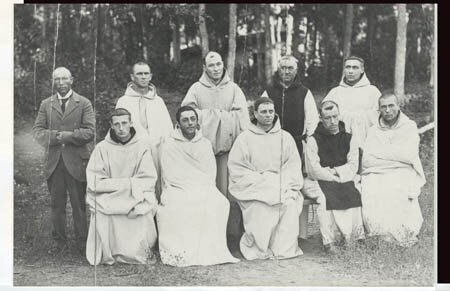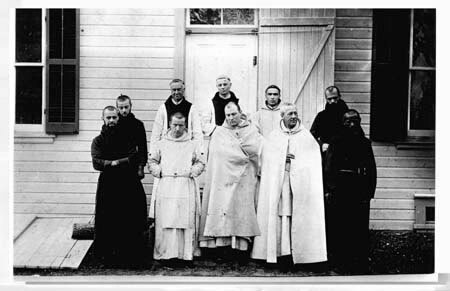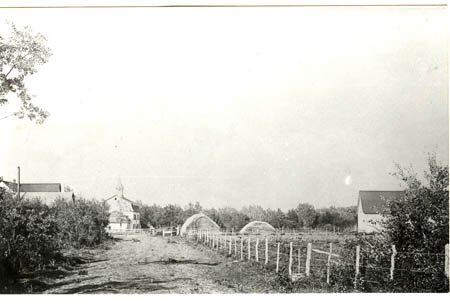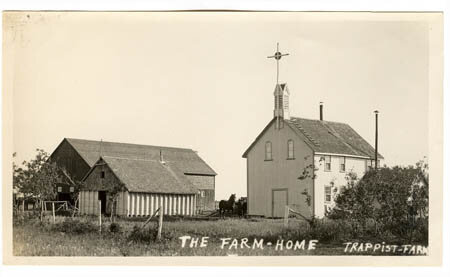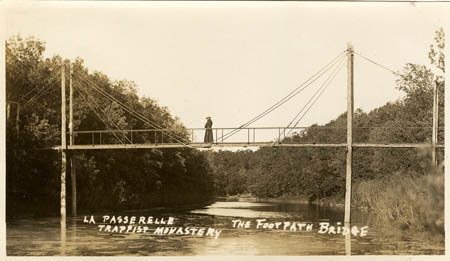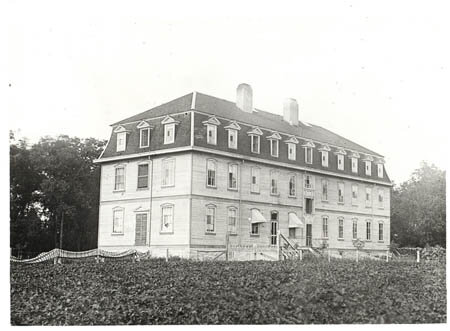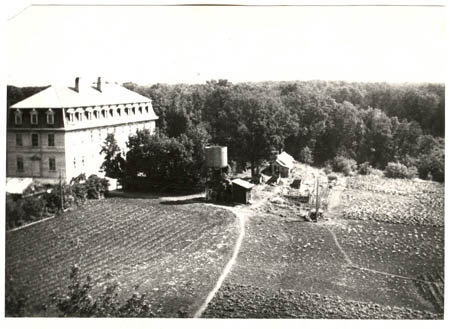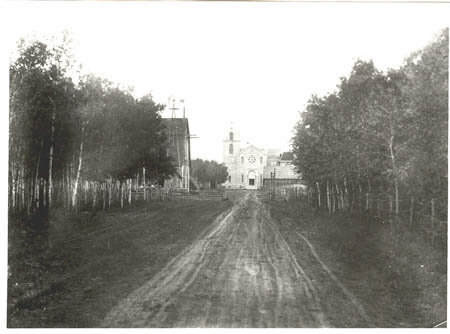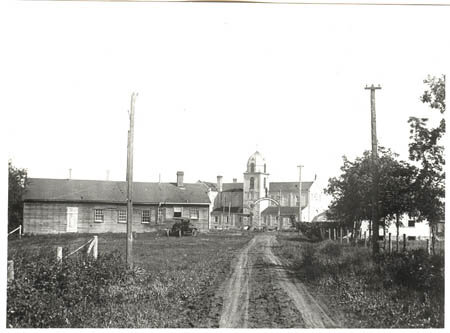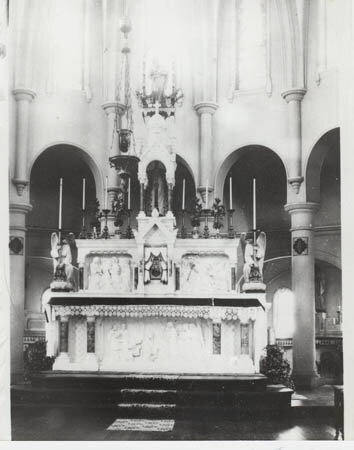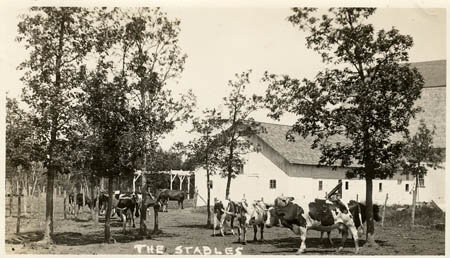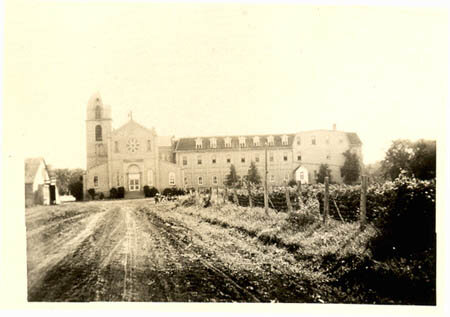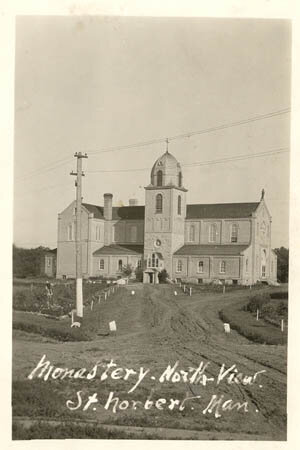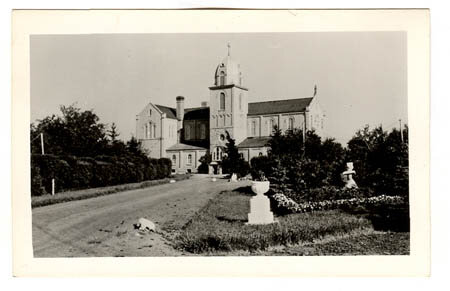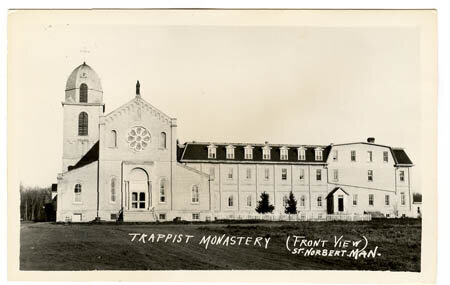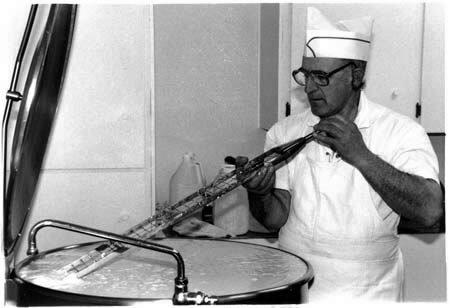
Monastery History
For 85 years, the monastery of Our Lady of the Prairies in St. Norbert was home to more than 50 Trappist monks of the Cistercian Order of Strict Observance. As the City of Winnipeg expanded throughout the 1960’s and 70’s, the once reclusive site of the monastery became threatened, and in 1978 the monks sought a new home in Holland, Manitoba.
The historic remains of the hundred-year-old monastery were narrowly saved from neglect and vandalism thanks to the dedicated efforts of the community group Heritage St. Norbert after a fire destroyed much of the Monastery building. These citizens lobbied to have the grounds preserved as a heritage site and raised money to buy the land and the Guest House building which the St. Norbert Arts Centre now calls home.
Timeline
1892: Original monastery built
1904: Larger monastery completed, original turned into guest house
1912: Fire destroys guest house but is immediately re-built
1975: Monks relocated to Holland, Manitoba
1983: Fire destroys monastery
1991: St. Norbert Arts Centre is founded
1996: Renovation of the guest house to house SNAC
2011: 20th anniversary of SNAC
A Detailed History
St. Norbert, Manitoba’s Birthplace
A spirit of activism and dedication to preserving community heritage has long been a tradition in St. Norbert. Over 125 years ago, the people of St. Norbert faced a serious struggle when the Government of Canada tried to survey their land to make way for future settlers from Eastern Canada.
This land, located near the scenic junction of the Red River and La Salle River (La Rivière Sale), was a busy centre for hunting, fishing and trade for Aboriginal peoples. With the advent of the local fur trade, the area evolved by the 1820s into a French-speaking Métis settlement. St. Norbert’s location along major trade and transporation routes, as well as its proximity to St. Boniface and prime agricultural land, meant the community was able to profit from freighting, merchandising, transporting and providing services for travellers from Eastern Canada and the northern United States, and attracted many families and settlers from Québec and France.
In June 1869, the Government of Canada decided to stake out land in St. Norbert to prepare for an influx of new settlers. When news arrived in October that Canadian Government surveyors had been dispatched north of the community, the French-speaking Métis took quick action to defend their land. A group of nineteen unarmed men challenged the surveyors to halt their work until negotiations with Ottawa were complete. Later, at a meeting in front of the St. Norbert parish church, the community elected the Comité National des Métis to lead La Résistance. Louis Riel was chosen as leader. The Comité formed a Provisional Government which claimed the power to negotiate with Ottawa. Its first act was to erect a barrier across the community’s main access road to keep out representatives of the Canadian Government.
Most of the people of St. Norbert rallied behind Riel. Father Noël-Joseph Ritchot, the parish priest, played a critical role in the subsquent negotiations with Ottawa. The Canadian Government tried to quash the resistance by sending in military forces, and Riel was forced to flee. In July 1870, negotiations resulted in Manitoba being granted provincial status. The Manitoba Act was proclaimed, guaranteeing the linguistic, religious and proprietary rights of its citizens. The will of the people of St. Norbert prevailed.
Nôtre-Dame des Prairies, A Spiritual Legacy
With peace restored to St. Norbert, Father Ritchot returned his attention to the spiritual needs of his community. He had long hoped to establish a monastery on a secluded piece of parish land along the La Salle River. In 1891, Ritchot’s hopes were realized. He and Archbishop Taché of St. Boniface persuaded the Abbot of Bellefontaine, France, to establish a home for Trappist monks in St. Norbert.
The Trappists were an independent branch of the Cistercian Order, which began in Normandy after 1664. They strictly followed the basic tenets of St. Benedict: charity, obedience and humility. Religious persecution in France during the late nineteenth century forced many Trappists to leave Europe.
In 1892, the monks arrived at Nôtre-Dame des Prairies (Our Lady of the Prairies). For eighty-six years the site provided the Trappists with tranquility and sustenance for their lives of prayer and manual labour.
Without the comforts and distractions of the secular world, the monks were devoted to work and prayer, and sought a closer union with God through contemplation. They rose at 3:15 a.m., gathered for prayer seven times during the day, devoted several hours to spiritual reading and study, and worked laboriously at field, garden and craft duties for the rest of the time. For many years, the Trappists observed their Order’s renowned rule of silence within the monastery, communicating in their own form of sign language.
Through hard work and devotion, the monks of Nôtre-Dame des Prairies built the monastery into a prosperous agricultural operation complete with a sawmill, forge, apiary, cheese house, bakery and greenhouses. Themselves vegetarians, the monks sold meat, dairy products, honey and their world-famous cheese to the outside community. The monks, ranging in number from thirty to forty-five, perfected their skills as gardeners, carpenters, ironworkers and decorative artists.
In 2005, the St. Norberts Arts Centre created an on-line presentation of "A Day in the Life of a Trappist Monk" for the Virtual Museum of Canada.
Architectural Remains
The monastic buildings constructed by the Trappists are examples of unique religious architecture in Manitoba. The buildings’ austere and restrained French design was consistent with Cistercian spiritual values, favouring simplicity and minimal decoration.
The first monastery building, constructed shortly after the monks arrived in 1892, was a three-storey wooden structure on a stone foundation which featured a chapel, porch and bell tower. It was adapted as a house for guests in 1904 when the monks moved to a larger residence built nearby.
In the Trappist tradition of hospitality, the guest house welcomed church officials, the monks’ families and individuals on retreat. In 1912, the guest house was destroyed by fire. The monks replaced it immediately with a new guest house, the building now occupied by the St. Norbert Arts Centre.
The new chapel and monastery were completed between 1903 and 1907. Its Romanesque Revival construction is considered to be of outstanding architectural merit, deomonstrating unparalleled richness and clarity of form. Built of brick and tyndall stone, the chapel featured a lovely rose window, silver-domed bell tower, eight free-standing radiating columns and a cluster of seven smaller chapels. Attached to the chapel with corresponding colour and detail was the monastery, which repeated the rectangular floor plan, mansard roof and dormer windows of the guest house.
An Ending and a New Beginning
The Trappists made many efforts over the years to preserve their peaceful solitude. However, by the 1960s, encroaching urbanization increased traffic in and through St. Norbert. In 1975, the Trappists decided to relocate to a more secluded location near Holland, Manitoba, 145 kilometres (80 miles) southwest of Winnipeg. By 1978, most of the outbuildings had been taken down or moved. Only the chapel and monastic wing, guest house and gate house remained. The property was sold to Genstar Corporation, a Canadian land development company.
Local residents acting through the non-profit organization Heritage St. Norbert Inc., set out to preserve the site’s historical and cultural character. In 1980, the group secured from the City of Winnipeg a historic building designation for the chapel and monastic wing. The group began to research possible uses for the site. Tragedy struck in 1983, when vandals lit a fire which gutted the vacant chapel and monastery. The Guest House, located some distance away, was spared.
The fire did not destroy the beauty and dignity of the site, however. Heritage St. Norbert’s efforts turned to preserving the only existing monastic ruins in North America. In 1987, through the cooperation of Genstar and three levels of government, the property was set aside as a provincial heritage park
In 1988, as a result of the efforts of Heritage St. Norbert, the Province of Manitoba designated the guest house and the surrounding land as a heritage site as well. That same year, the guest house and adjacent five acres were purchased from Genstar with a donation from St. Norbert residents William and Shirley Loewen. Thanks to provincial grants, donations and countless volunteer hours, the Guest House was partially renovated.
Birth of St. Norbert Arts Centre
In February of 1991, L’Hôtellerie St. Norbert Guest House Inc. was incorporated to assume ownership of the guest house. Later, the organization began to operate the guest house as the St. Norbert Arts Centre. Between January and July of 1995, the St. Norbert Arts Centre undertook an ambitious and extensive renovation of the Guest House.

